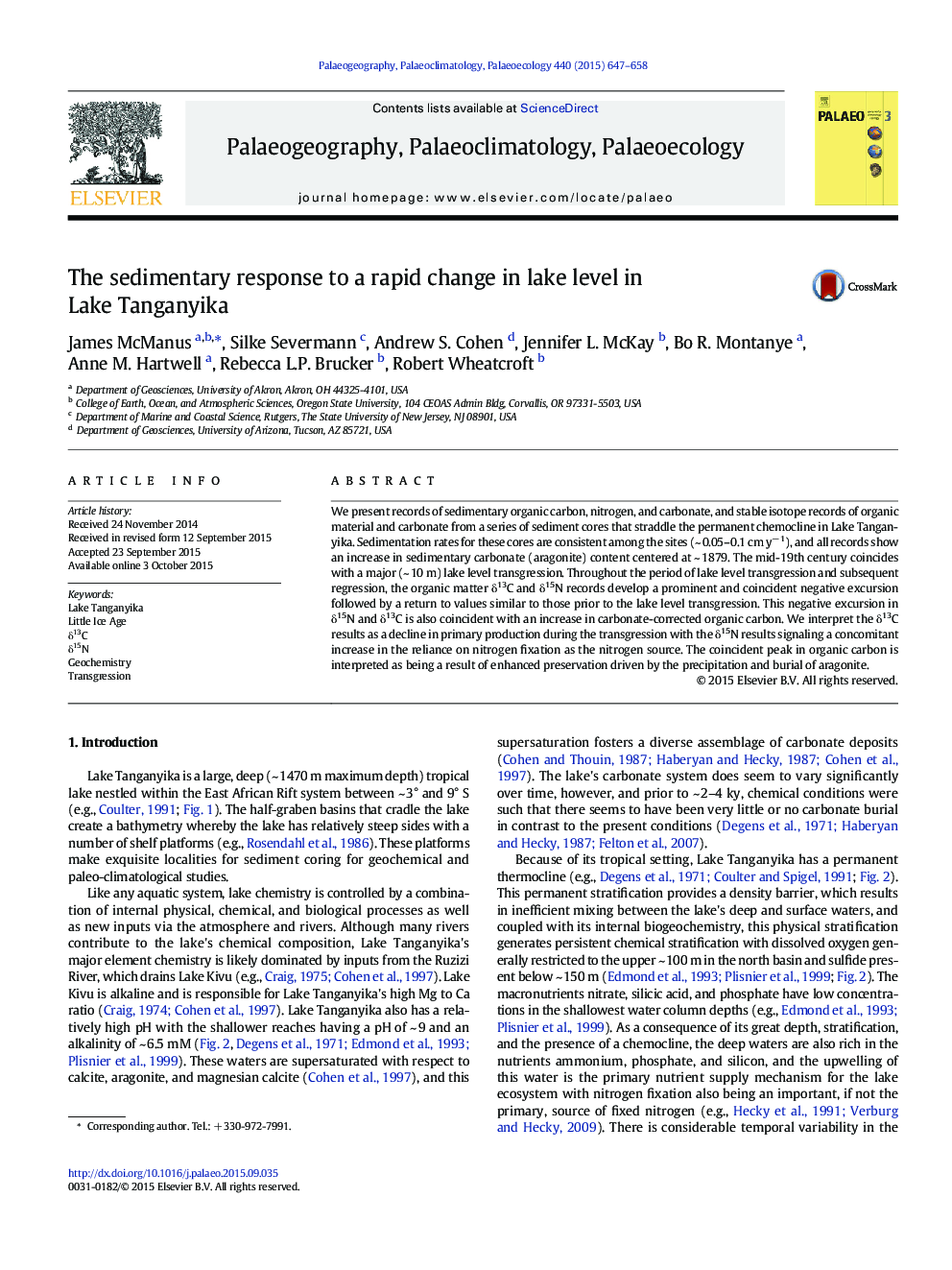| Article ID | Journal | Published Year | Pages | File Type |
|---|---|---|---|---|
| 6349566 | Palaeogeography, Palaeoclimatology, Palaeoecology | 2015 | 12 Pages |
Abstract
We present records of sedimentary organic carbon, nitrogen, and carbonate, and stable isotope records of organic material and carbonate from a series of sediment cores that straddle the permanent chemocline in Lake Tanganyika. Sedimentation rates for these cores are consistent among the sites (~ 0.05-0.1 cm yâ 1), and all records show an increase in sedimentary carbonate (aragonite) content centered at ~ 1879. The mid-19th century coincides with a major (~ 10 m) lake level transgression. Throughout the period of lake level transgression and subsequent regression, the organic matter δ13C and δ15N records develop a prominent and coincident negative excursion followed by a return to values similar to those prior to the lake level transgression. This negative excursion in δ15N and δ13C is also coincident with an increase in carbonate-corrected organic carbon. We interpret the δ13C results as a decline in primary production during the transgression with the δ15N results signaling a concomitant increase in the reliance on nitrogen fixation as the nitrogen source. The coincident peak in organic carbon is interpreted as being a result of enhanced preservation driven by the precipitation and burial of aragonite.
Related Topics
Physical Sciences and Engineering
Earth and Planetary Sciences
Earth-Surface Processes
Authors
James McManus, Silke Severmann, Andrew S. Cohen, Jennifer L. McKay, Bo R. Montanye, Anne M. Hartwell, Rebecca L.P. Brucker, Robert Wheatcroft,
